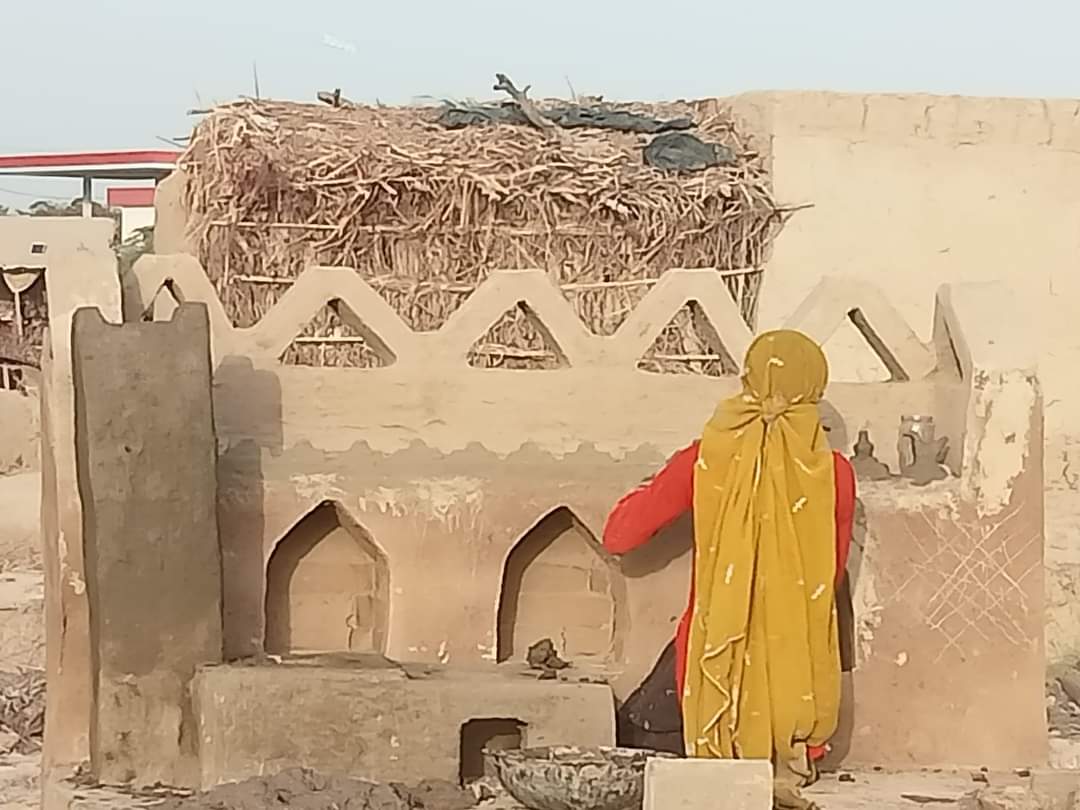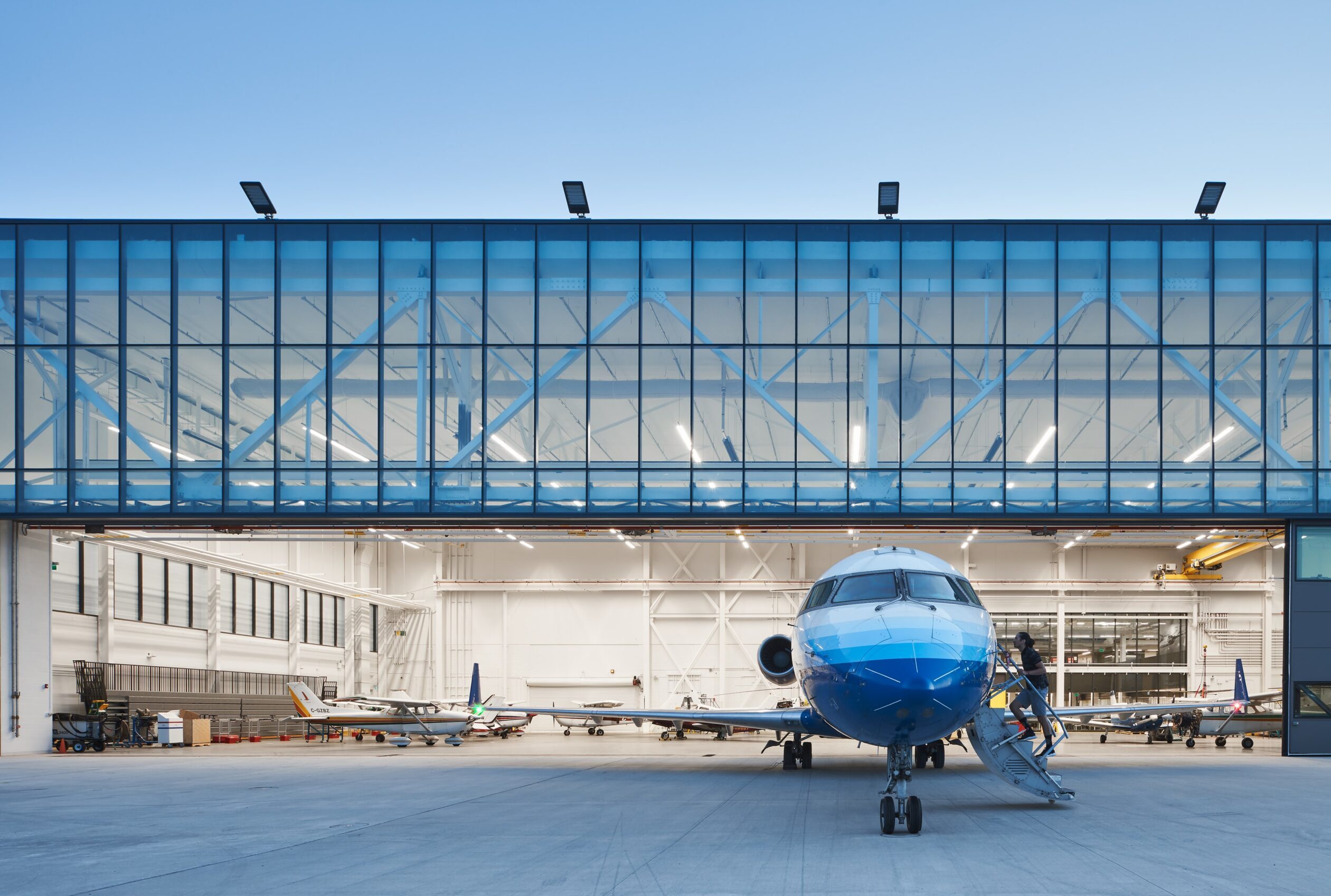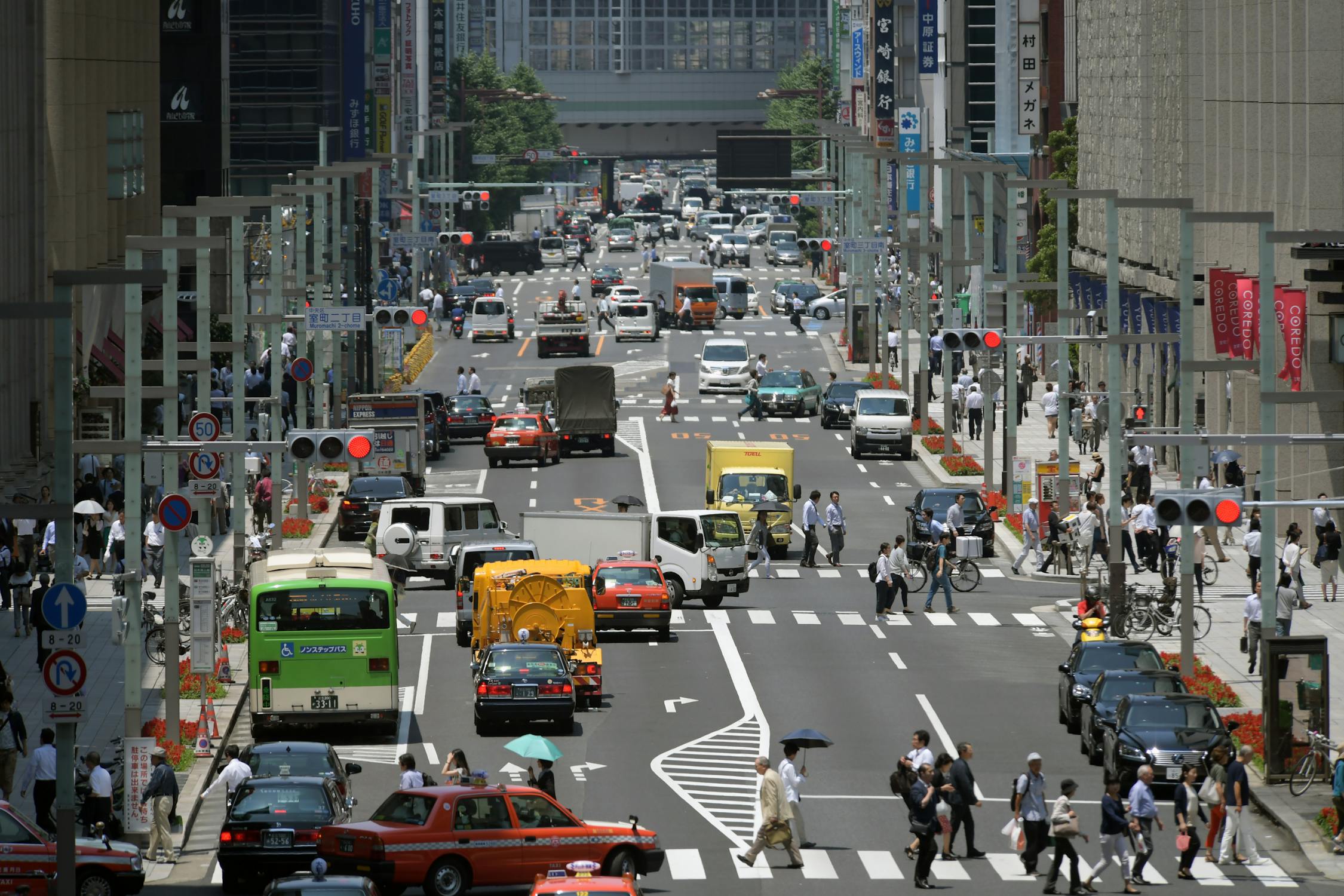This interview was conducted by Lori Ferriss. Architecture 2030’s mission is to rapidly transform the built environment from a major emitter of greenhouse gases to a central source of solutions to the climate crisis. For 20 years, the nonprofit has provided leadership and designed actions toward this shift and a healthy future for all.
Dr. Yasmeen Lari is Pakistan’s first female architect and co-founder of the Heritage Foundation of Pakistan. After a career as a leading commercial architect, she shifted her focus to humanitarian architecture. She pioneered what she calls Barefoot Social Architecture, a model for self-built, resilient, low-carbon housing using local materials and craft. This approach has resulted in the construction of some 40,000 refugee homes.
Last year, she was awarded the Royal Institute of British Architects (RIBA) Gold Medal for the impact of her work and commitment to addressing poverty through design. As former RIBA President Simon Allford says, Lari “has shown us how architecture changes lives for the better.” I spoke with Lari this spring about her work and the future of design as a social and climate action lever.
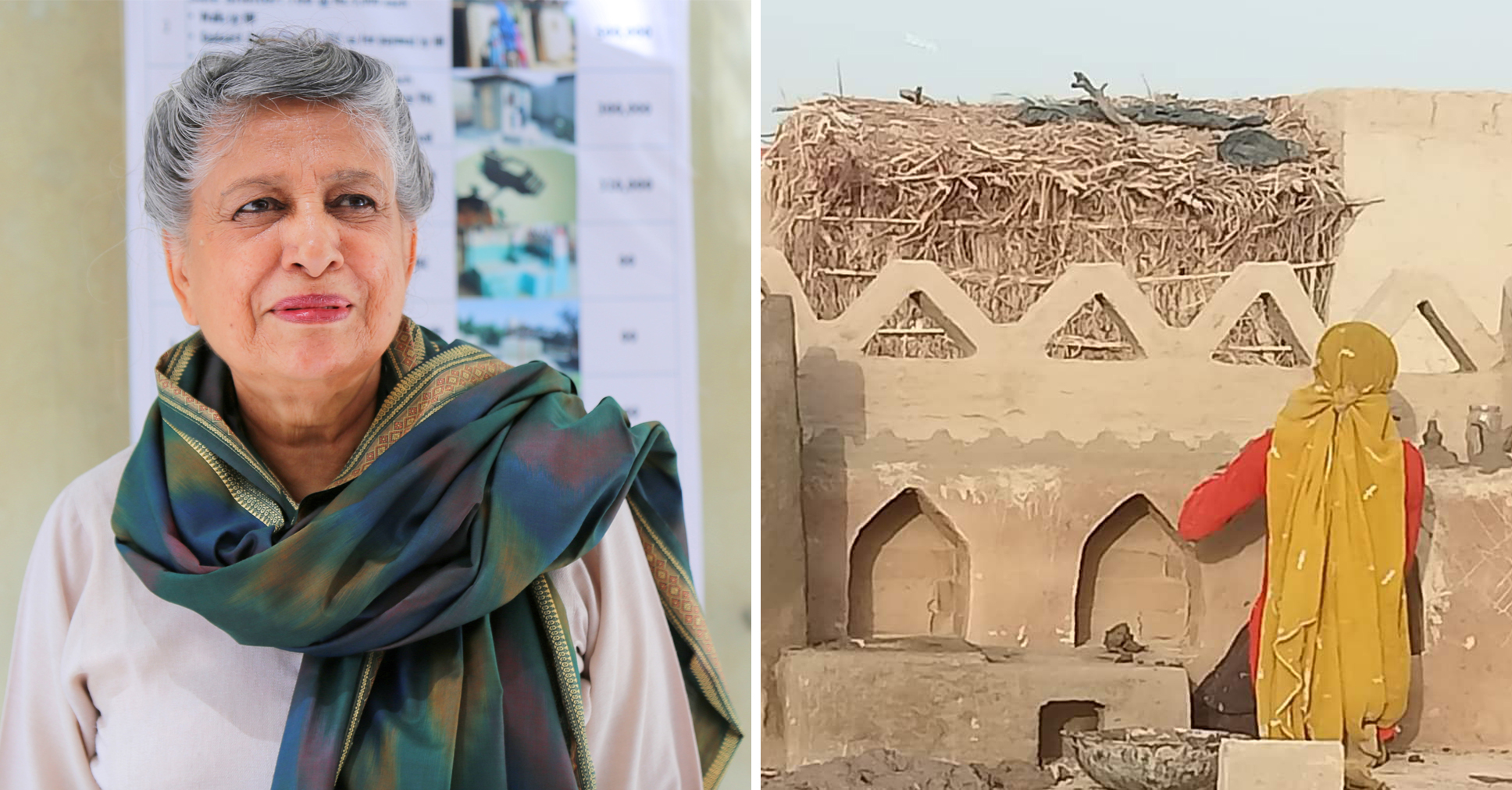 Lori Ferriss: Would you tell us a bit about why and how you transitioned from working as a highly successful commercial architect to an activist architect?
Lori Ferriss: Would you tell us a bit about why and how you transitioned from working as a highly successful commercial architect to an activist architect?
Yasmeen Lari: As you get more successful, more of the same kind of projects come your way. I began to feel that although I could design as I wanted, and of course, you are creative about every project you do, however, when you really think deeply about it, it’s almost all the same kind of work, the same kind of briefs, the same kind of clients – everything is the same. I didn’t feel comfortable with that. Ultimately, the commercial work I was doing, which was really pandering to the taste of the privileged, didn’t make sense to me anymore. And I decided to quit. That was it.
I wanted to write books. I thought that was the best way to spend my time because we had collected a lot of material over time in terms of heritage documentation, and I was very interested in traditional ways of building. But other things came my way. UNESCO tapped me to work in [Pakistan’s] Lahore Fort. For three years, I spent time in this amazing World Heritage Site. That gave me a fantastic sense of how important heritage was for us in terms of understanding many things, such as the spatial characteristics and the use of all kinds of indigenous materials.
Then the 2005 Kashmir Earthquake happened, and I decided to go there to pitch in. Some 80,000 people were killed in that disaster. About 400,000 families were displaced. I had never done any humanitarian work before, and I didn’t know whether or how I could be of help. I arrived there with very little money, and what was amazing was that although I’d gone by myself, so much help came to me. Gradually from all over the world, people came to help me out. I was just stunned by the kind of help that you get when you start working in the field, because you’re never alone. Suddenly I found that I could do something of value. So little effort can really transform so many people’s lives. And so I’m still there, working in that field.
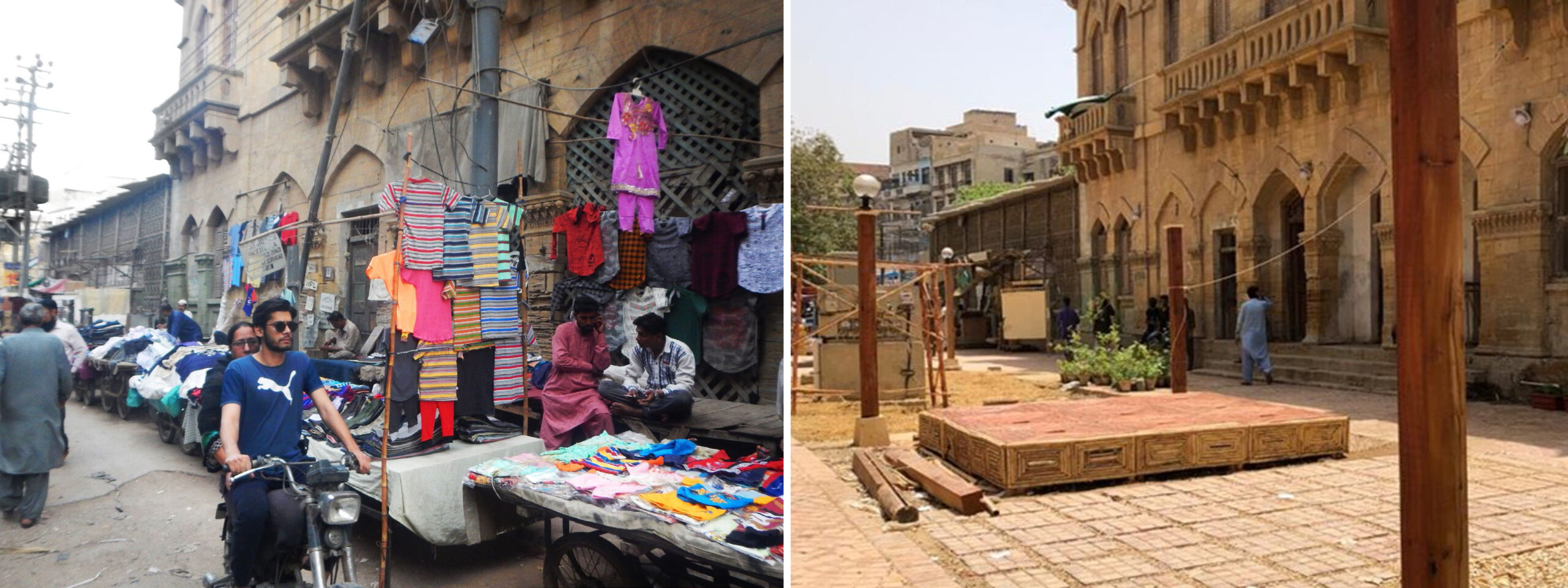 Before and after, Denso Hall Rahguzar | Photos courtesy of Yasmeen Lari
Before and after, Denso Hall Rahguzar | Photos courtesy of Yasmeen Lari
LF: How can design help address the environmental and social challenges that the world is facing?
YL: Design is a key factor in almost anything. The skills I was taught studying architecture – how you deal with context, how you deal with clients and consultants, how you make the most of the available resources – are so important. Everything I did before made it possible for me to tackle this humanitarian work. When I look back, I find that all my work with heritage, particularly looking at the vernacular traditions, were all important for me when I began to work in the humanitarian field.
In part, the environmental benefits of this work comes from necessity. When you work in disaster areas, particularly in countries like Pakistan, where the poverty levels are high, you have to use every resource you can find. When I arrived at the earthquake scene, there was so much debris. I had never experienced anything like that before, but it seemed that it would be best to just start using the debris to rebuild rather than wasting it.
I then got a chance to work with bamboo because of my experience with displaced people due to strife in the north of Pakistan. I was supporting people in a camp in very hot weather, and the best thing I could do was to build their community kitchens, because there was no place for them to cook. I tried to look for materials, but everything was too slow. Even the masonry structures would be too slow. We found some bamboo, and it was excellent in terms of working very, very quickly. That was the first major project in bamboo, and it did pretty well.
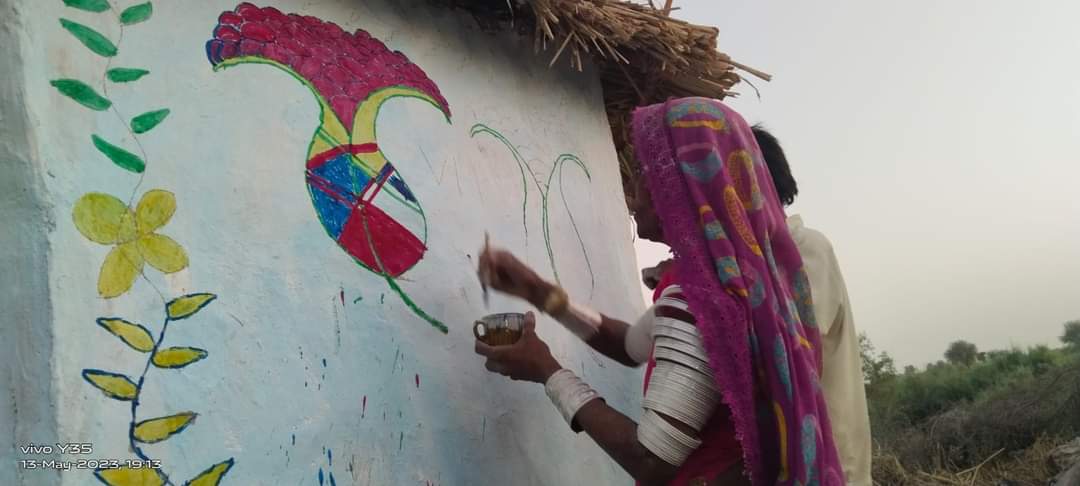
Woman decorating her prefab bamboo house | Photos courtesy of Yasmeen Lari
Often, when you are using local materials, there is very little embodied energy, in part because things are physically at hand. My palette is earth, including lime, which, as you know, absorbs carbon from the atmosphere as it cures, and bamboo itself stores carbon. Using these local materials have allowed me to build very strong buildings in very simple ways. They’re really low-tech and have a low [environmental] impact.
For me the key to really helping these displaced people was to see how I could design something that could be built by the people themselves rather than a contractor. This was a new way of working with people. As a woman, I had the privilege to be able to go into women’s quarters. There were few women in the field who had come to help. I got to work with women, and I understood the strength of them. They’d lost everything, but they wanted to rise above this adversity. Every time I go into a disaster area, I try to mobilize women. They’re often the ones who lead. It’s not that men don’t do anything, they also get engaged, but women are really determined to have a better life and so they are the ones who will take it forward.
The question is: Do we need industrialization? In the context that I’m working in, there’s no need for that because everything can be designed to be very, very easily constructed as long as you use the right materials.
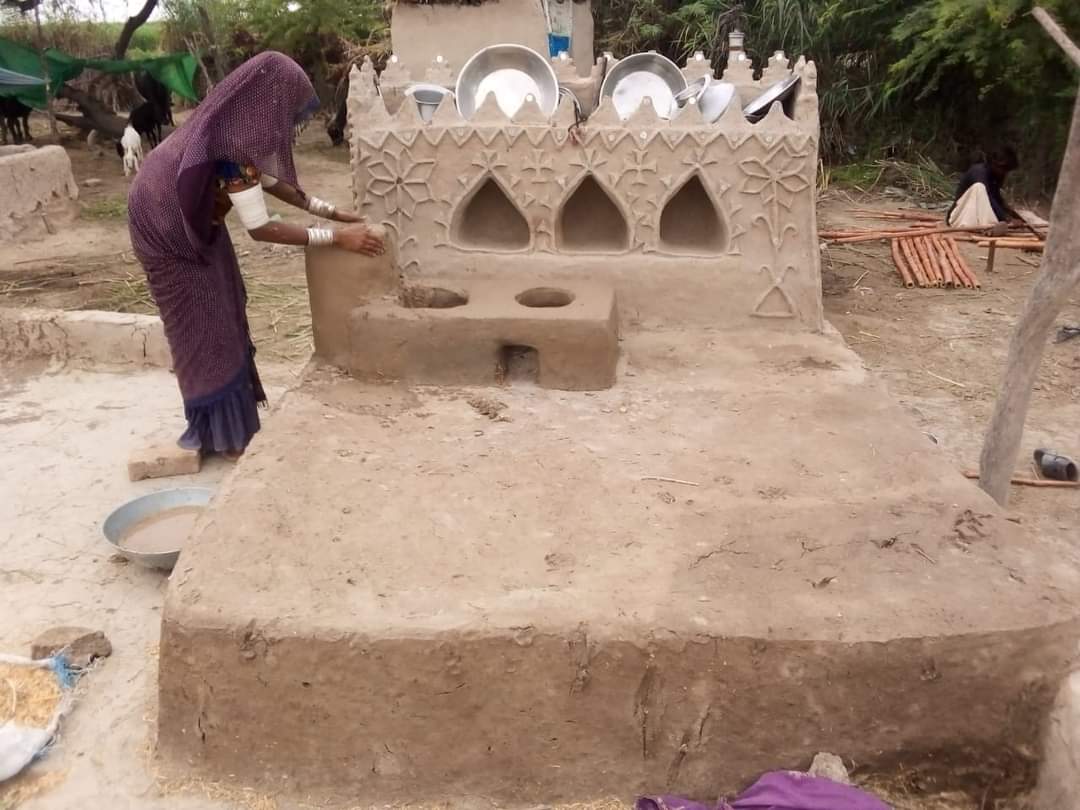
Woman finishing her Pakistan Chulah | Photo courtesy of Yasmeen Lari
LF: Can you describe how you see the role of heritage and traditional knowledge for the future of architecture?
YL: Ancient wisdom exists in all societies, especially indigenous societies. In the Global South, there are places that have been so poor that some modern ways have not affected them much. When you go into these places, you see people making the best of every material that they have. They may not know the technical part of it, but they do know that all this can be done; after all, what was done before lasted for a long time.
I learn a great deal from vernacular construction. I found this particular circular form in Pakistan, you find it in Africa as well, that itself is very strong and survived the earthquake. I decided to use that form with prefabricated wall panels, and I got these amazing resilient structures which are not only flood resilient, but also earthquake resilient. And it’s all to do with learning from heritage, from looking at what’s been done before. No engineer has given me the engineering solutions to these things, but just by building, we now understand the material, and it works well.
I don’t believe in just replicating something, but I do believe in learning from the past. I think it’s important to see what is relevant today. The best lesson is to see how you can use the resources that are available in the best possible manner so that you don’t hurt the planet anymore.
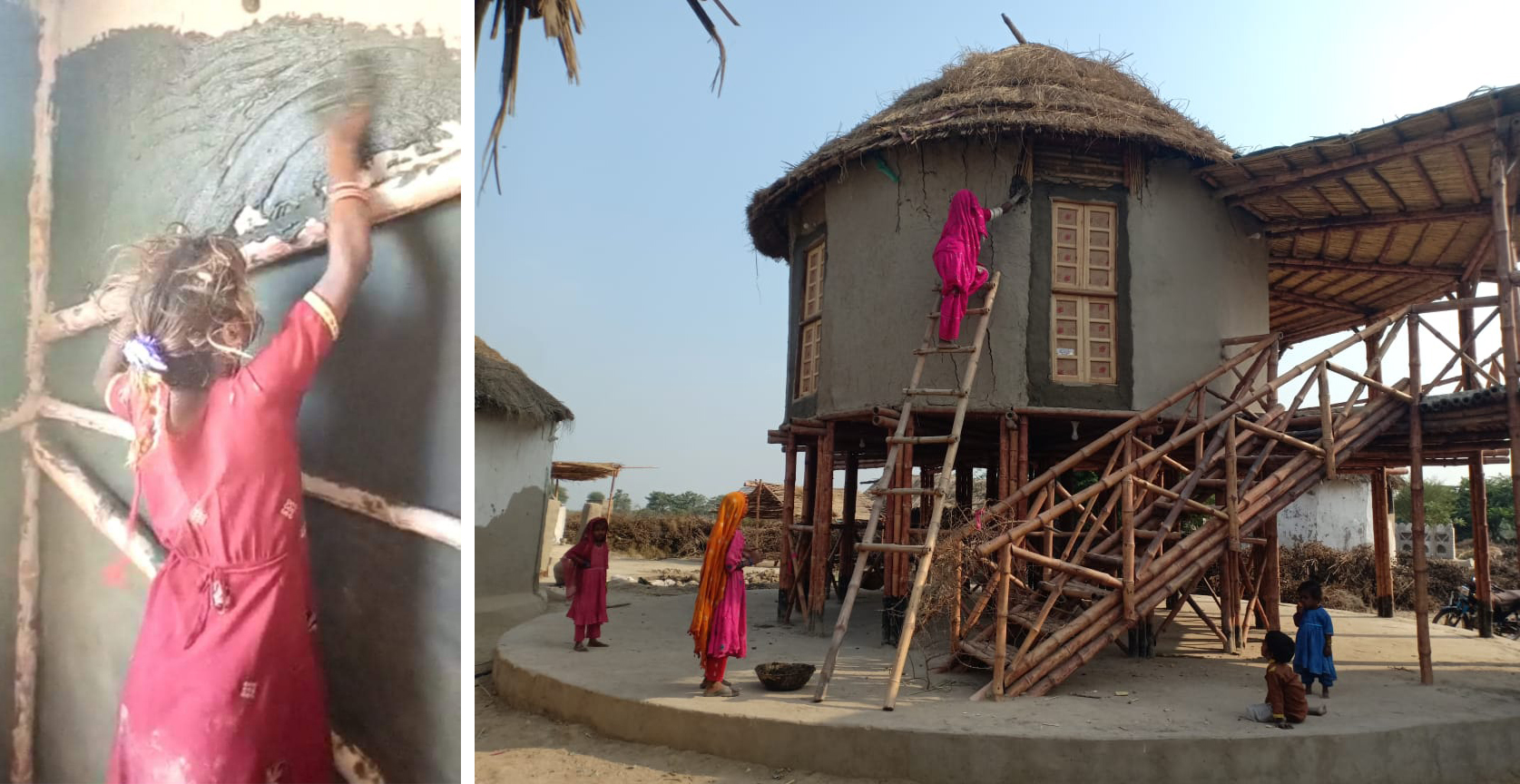
Local women applying lime render to elevated community centre copy | Photo courtesy of Yasmeen Lari
LF: You have demonstrated a place-based, self-building model that has created thousands of resilient homes in a very short time in Pakistan, using local materials and heritage techniques. What principles can we take away from your program that can be applied to other places around the world facing similar issues?
YL: All my work has been in Pakistan, but it’s very much applicable throughout the Global South because my approach is oriented towards people who are very poor. My latest is a zero donor model where with almost no upfront investment, people are able to save their own money to build homes. In 10 months, we’ve been able to make some 400,000 families food secure, and 40,000 single room houses have been built by people who have no money.
It’s all about capacity building in a peer-to-peer transfer of knowledge basis. I don’t go and do it myself. It is the same kind of people who’ve gone through the same kind of adversity who we train in various techniques of farming, of becoming food secure, and also building their own houses. That also includes learning to deal with disasters like the floods. What do you do with the soil? How do you absorb more and more water into it? And how do you put lots of trees where there’s no vegetation, etc.
These people who have been trained then charge a small amount of money to train others in a very structured system. In fifteen days they learn how to start growing vegetables, how to have chicken and also start breeding fish. And now that they’ve done that, now we’re going in for savings. A lot is possible if you build up the capacity of people. It is, in a sense, democratizing knowledge. And then you can reach out to millions, literally millions.
I think the whole thing is: How do you decentralize? How do you give over control to others so that you become redundant? My life ambition is to become redundant, by transferring the knowledge that we have acquired or accumulated to others, and then they can carry on.
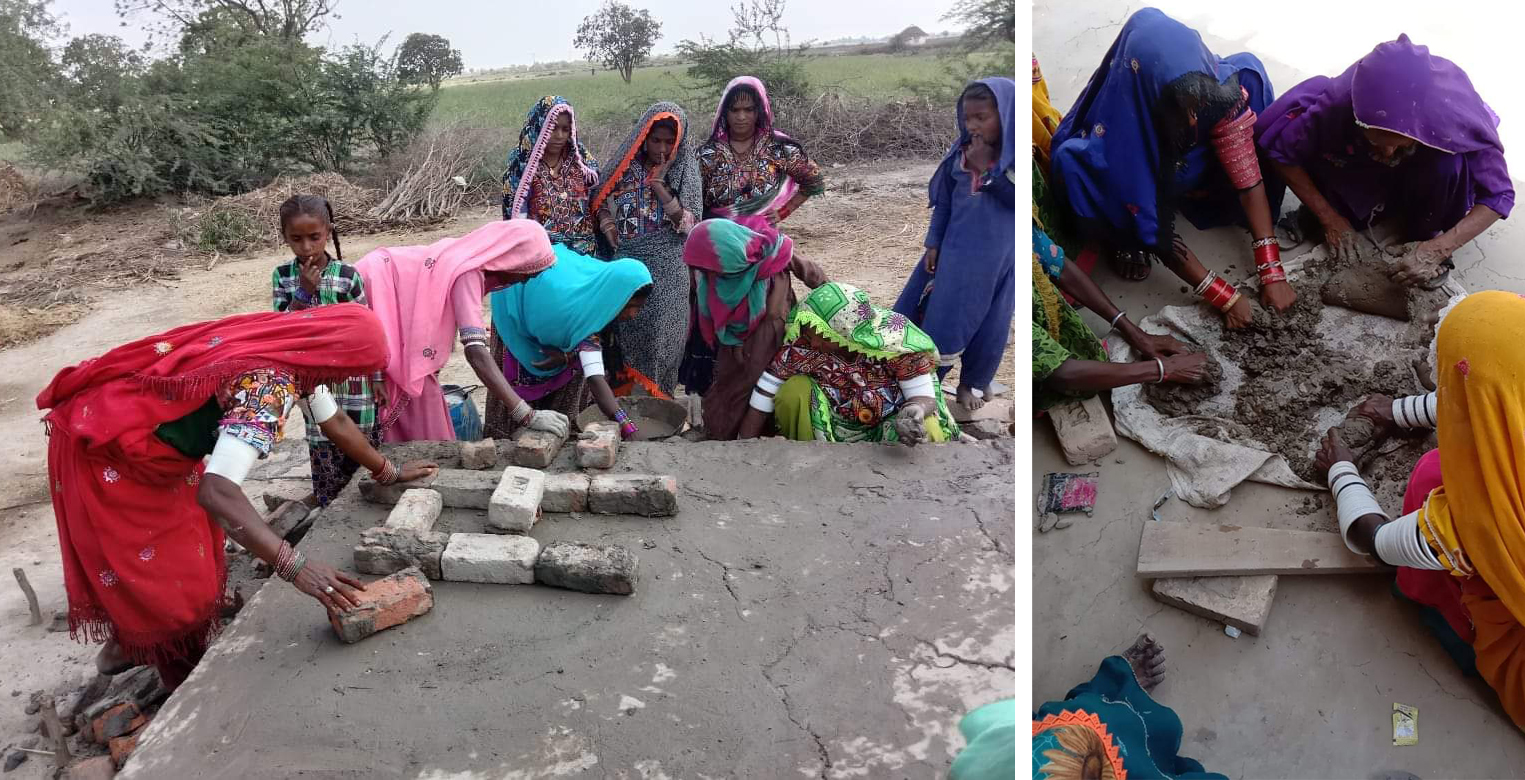
Women laying out Pakistan Chulah on a platform | Photo courtesy of Yasmeen Lari
LF: What advice would you give to young architects who want their work to have a positive impact?
YL: What we really need now is to nurture our young people who want to do something different. They are ready because they understand the issues in the world today: displacement and homelessness and conflicts and climate change. There are just a whole lot of things that are going wrong, and somebody’s got to start working with those people. They need our help. But it’s not forthcoming, the architectural profession is not there.
I would like universities to start architectural incubators and join hands with the associations like AIA or RIBA, and with the building industry, to support young architects. I think if these young architects get two years of support, then they can start working in their own communities; you don’t have to go elsewhere to do it, you know, and they learn how to do this work.
Every place has problems. We should be there to help. This is what design does – it improves the lives of people.
Lori Ferriss is an architect, structural engineer and conservator known for sustainable redevelopment of historic and existing buildings. Her award-winning work spans design projects and research investigations to policy development with a focus on advancing climate action and equity through design. She is a Senior Fellow with Architecture 2030. She is a co-developer of the CARE Tool, which estimates the carbon benefits of reusing and retrofitting buildings for designers, owners, planners and policymakers.
